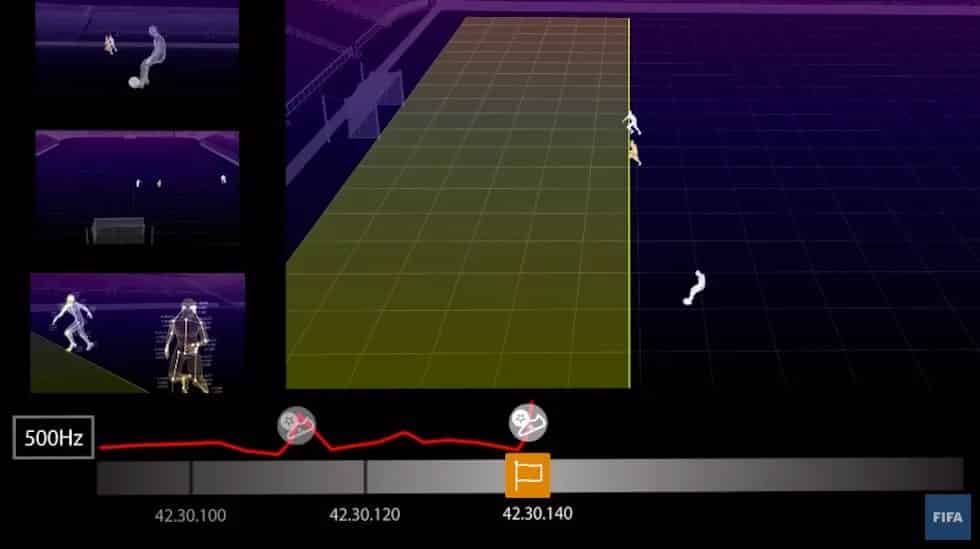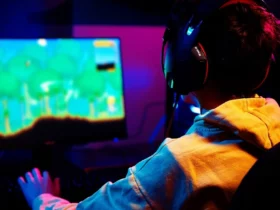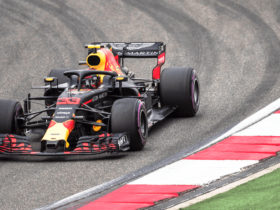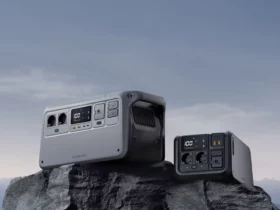FIFA announced a technological change in view of the Soccer World Cup 2022 in Qatar: the fu semi-automatic game. A system that integrates localization cameras and sensors inserted in the balls to speed up the judgments of linesmen and referees. But how does semi-automatic offside work? And above all, what technologies make it possible?
Semi-automatic offside revolutionizes World Cup matches with technology
Usually in early July, football fans from all over the world would be watching the finals of the World Cup in front of the TV. But this year it is played in Qatar from 21 November until 18 December 2022, pfor a cooler climate. But football fans are always talking and FIFA wanted to give them a new reason to do so.
In fact, he introduced the semi-automatic offside feature, which uses a mix of IoT sensors (Internet of Things), artificial intelligence and cameras arranged on the net to analyze offside situations. A hyper-technological solution that will arrive in Qatar for the first time this autumn.
A complicated evaluation
Offside is the most difficult rule of 11-a-side football to explain to non-fans. Mainly because they’re not usually interested in figuring it out. The rule AIAthe international association of referees, provides that a game is offside if:
- It is located in the opponent’s half
- It is in the active play position
- The player receiving the pass is closer to the goal than the ball
- Any part of his body, head or feet (except hands and arms) is closest to the opponent’s goal line of the penultimate opponent. So if there is only one player between him and the goal (not necessarily the goalkeeper) or no one when he receives the pass, he is offside.
At an amateur level and in the minor leagues, to evaluate this position i linesmen run to stay in line with the penultimate defender, to understand if the opponents pass him when the pass starts. But at a higher level (like in Serie A) we already get help from technology.
Il VAR (Video Assistant Referee) sees a team of experts and a referee viewing the recorded video of the action and calling the referee’s attention on the pitch. The advantage they have is the ability to stop the action at the exact moment the passage starts. In this way they can “pull the lines” and assess whether the attacker overtakes the penultimate defender (usually a defender), with high accuracy. But not absolute.
In fact it can happen that the cameras are not well online, making evaluation difficult. Especially if the offside is really millimeter: in these cases you can get there even with long waits before making a decision. Something FIFA would like to avoid in Qatar.
How semi-automatic offside works
FIFA has already tested the semi-automatic offside technology during the Arab Cup (as we told you) and the Club World Cup. But now he wants to use it officially during the most popular football event in the world (even if Italian fans will follow him this year with a bitter taste).
Each station in Qatar will use a twelve tracking cameras, which will keep track of the movements of the players on the field. Sarannor video cameras recording at 50Hztherefore able to collect fifty images every second and triangulate them when needed.
I balloons instead they will have gods sensors which identify and send the position at 500Hz, with absolute precision. Kind of like sensors that we already use today in the “goal-line technology”, which allows you to understand if the ball actually enters the goal or not. But here the offside line is mobile, so sensors in the ball and video cameras need to communicate with each other.

A dedicated artificial intelligence evaluates the position of the ball five hundred times per second, in order to perfectly understand when a cross or a pass to a teammate starts. By triangulating the camera data, the AI creates a model of the penultimate defender and the attacker receiving the pass. In this way we have a virtual model of the action which shows if when the pass starts the player has parts of the body offside.
The whistle remains in the man’s mouth
However, FIFA specifies that the term “semi-automatic” depends on the fact that the final decision always rests with the man or woman who judges the action. In fact, each match will be followed by a team of experts, as happens for the VAR, who will control what is decreed by artificial intelligence. And who will communicate the decision to the referee on the fieldwho remains the judge of every game action.
With this process, it will take a maximum of twenty seconds to assess an offside situation. A tool that will make it harder for referees to err and should ensure fairer results. The entry or not of the ball into the goal and the offside become more and more ‘technological’ and precise. Even if the referee will be called to other judgments, for example to understand if a offside is more or less ‘active’ or ‘passive’. Not to mention the thousand other decisions made in a match.
The preparation and attention of the referees and linesmen remains essential for teams to compete fairly. Although with more technological tools to help them. That maybe after the World Cup we could also see in other competitionsas happened with the VAR.















Leave a Reply
View Comments